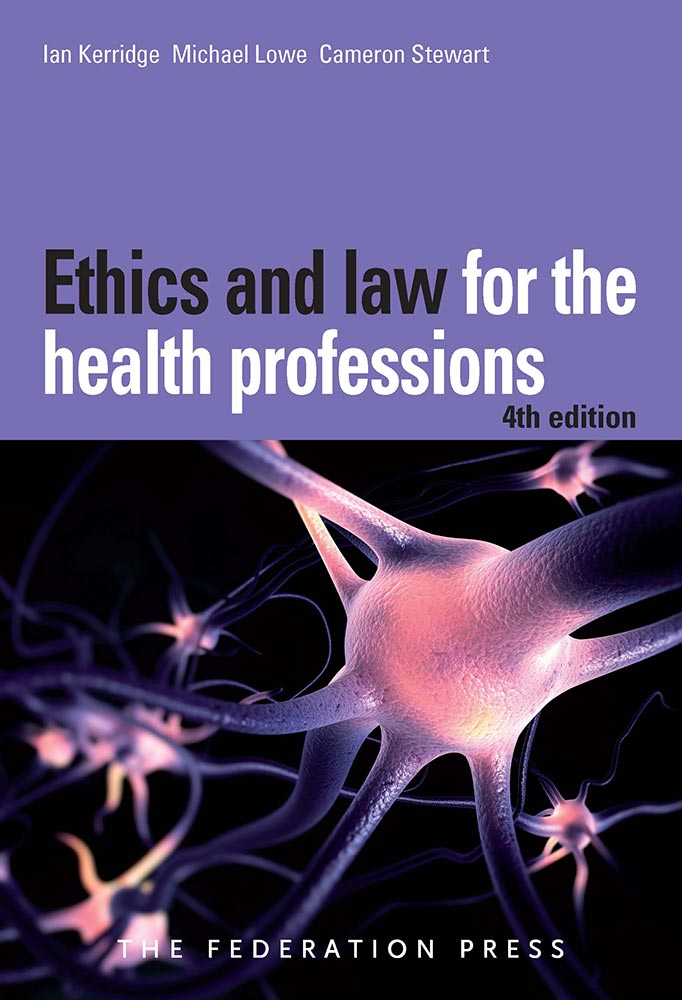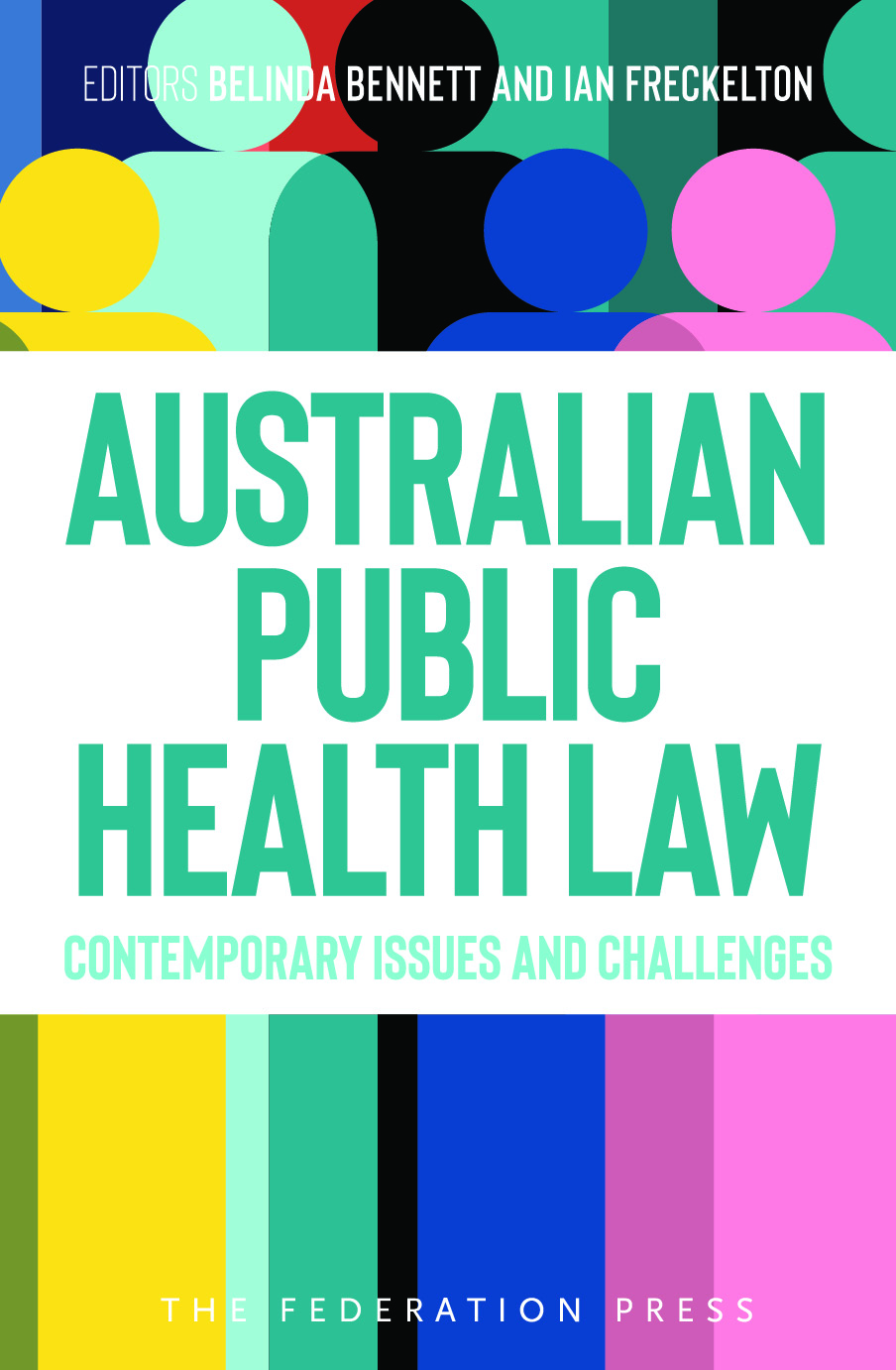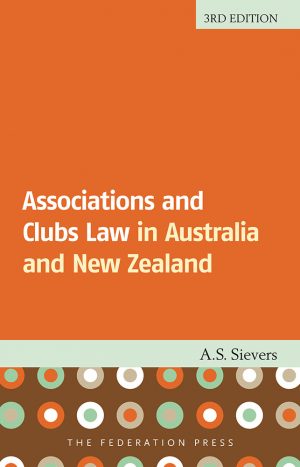Ethics and Law for the Health Professions is a cross-disciplinary medico-legal book whose previous editions have been widely used by students, teachers and practitioners in the health professions and in law. This new 4th edition has been extensively revised and updated to take account of developments in law, biomedical science, healthcare delivery and bioethics. Sections dealing with critical reasoning, problem solving, professionalism, negligence, standards of care, public health and the emerging biosciences have been considerably expanded and entirely new chapters have been added dealing with sexuality, culture, rural health, evidence and global health.
As with previous editions, the 4th edition of Ethics and Law for the Health Professions focuses on issues that are relevant both to clinicians and to health-policy-makers. It combines insights from philosophy, bioethics and the health social sciences, biomedical research data and case law. Importantly, this book recognises that health professionals must understand both the ethical and legal implications of their practice but is careful to distinguish between the two.
This book provides an invaluable resource for those who are responsible for the design and delivery of health care and for those who have an interest in how health care can best meet the needs and reflect the values of the community.
Part 1: Introduction to Ethics and Law
What is Ethics?
Ethical Theories and Concepts
Relativism and Pluralism
Introduction to Law
Part 2: Critical Thinking and Problem Solving in Ethics and Law
Critical Thinking in Biomedical Ethics and Law
Evidence, Health, Ethics and Law
Principle-based Ethics
Problem Solving in Clinical Ethics and Law
Part 3: Core Topics in Ethics and Health Law
Professionalism
Trust, Standards of Care, Error and Negligence
The Student in the Health-Care Environment
Nursing
Truth-Telling (Veracity)
Confidentiality and Record-Keeping
Consent
Impairments of Decision-Making Capacity
Treatment and Non-Treatment Issues: The Limits of Medical Care
CPR and No-CPR Orders
Sexuality
Reproduction
Abortion
Children
People with Mental Illness
The Elderly
End-of-Life Care: Palliative Care, Euthanasia and Assisted Suicide
The Donation and Transplantation of Organs and Tissues
Post-Coma Unresponsiveness and Brain Death
Biomedical Research
Complementary and Alternative Medicine (CAM)
Drugs and Drug Companies
Part 4: Health Ethics, Law and Society
Public Health
Infectious Diseases
Ethics and Chronic Disease
Culture
Rural Health and Ethics
Aboriginal and Torres Strait Islander Health
Global Health
Resource Allocation
Health Care, Animals and the Environment
Part 5: The Challenge of Emerging Technologies
Genetics and Genomic Medicine
Biotechnology and the Emergent Biosciences
This new edition also has the most sophisticated model for ethical problem solving in clinical medicine that I have seen — a neat attempt to distil the best from existing models in use in the United States clinical ethics industry.
The authors, Ian Kerridge and Cameron Stewart of the University of Sydney’s Centre for Values, Ethics and the Law in Medicine, and Northern Territory community geriatrician Michael Lowe, are more than qualified for the job. Stewart’s legal radar is spot on, with laser-sharp analysis, and Kerridge and Lowe give full rein to their imagination, drawing in material from a dizzying array of sources.
Most of all, this book is that greatest rarity — a standard text that is a page turner, a cracking read that quotes from the Blwgavad Gita, and contains a Henry Lawson poem, in full.
W Peter Saul, Medical Journal of Australia, Vol 199, No 7, 2013
Reviews of previous editions:
…this is a comprehensive, well-written text, structured in a way that will be appealing and accessible to health professionals and legal practitioners at all levels of experience and knowledge… The book will work equally well as a research tool or as a source of guidance for real problems in clinical settings…highly recommended for health professionals and the lawyers who advise them.
Law Institute Journal of Victoria, September 2009
The third edition of this scholarly textbook continues the good narrative that has attracted Australian health professionals and provides them with a thorough knowledge of the basic concepts, foundations and principles in medical ethics and law from an Australian perspective.
The three highly respected authors paint a comprehensive picture of the Australian Healthcare system in 34 “hallmark” chapters over 895 pages.
This third edition lives up to the reputation built by the earlier editions as a must-have key textbook for health professionals involved in health ethics and law in Australia.
The Quarterly, Vol 42 No 3, September 2009, The Royal Australasian College of Medical Administrators (RACMA)
Although the title of the book suggests that it is for health professionals the preface and the introduction also recommend it of equal value to lawyers. As a general reference resource for lawyers I would have to agree. The three authors are Australian with significant qualifications in the areas of law and medicine. … Overall this is an excellent comprehensive treatment of many issues that confront health professionals in their daily practice.
ACT Law Society Newsletter, Ethos, March 2010
This is a highly accessible text which offers a comprehensive account of ethics for the health professsions. … [It] makes an excellent reference text for students …
Journal of Bioethical Inquiry, Vol 2 No 3
The three authors are extensively qualified in medical ethics and and the interrelationship between medicine and the law … This excellent work travereses a huge territory from ethical theories through legal principles, standards of care, capacity, consent, confidentiality, non-treatment orders, mental illness … and many other medical areas where ethics and law are intertwined.
The structure is a general discussion of examples with tables of distilled procedural advice aimed at clarifying issues, to lead to ethical decision-making. The tables serve their purpose well in focussing attention on relevant principles to reach conclusions with the confidence to take responsibility for the decision. There are examples of relevant legal cases with passages from judgments as well as ethical analyses.
In looking at problems several approaches are identiified and described. For example, in a case study about people with a mental illness, the psychiatric diagnosis, the psycho-social model, the biopsychosocial model and the medical model are decribed in detail. This way readers can understand the complexity of some cases and the differing, yet quite acceptable, approaches taken by different professionals.
Although the book is targeted at health care professionals, it would be a valuable addition to all legal practices as it covers all aspects of medical treatment and decision making from before conception to old age and, ultimately, death.
Law Institute Journal (Vic), September 2005
We believe this is an exceptionally good book, which should be of great interest and value to practitioners and students in the health professions.
[The authors intend the book] to be a primary teaching resource in bioethics and health law. They want it to be useable across the broad range of people working in health professions, whose requirements and approaches to ethical quandaries can vary so much. They aim to ‘draw a clear line between ethical principles and the principles of law’, recognizing the frequent confusion when both are involved. They have attempted to emphasize empirical research, where possible, not because such research resolves ethical issues, but because it provides insight into how we deal with them and may suggest new ways of approaching them. These aims are met, and much more.
…
The book is comprehensive. The introductory chapters are concise but clear, and are informative… Extensive coverage is given to major controversial areas such as euthanasia, assisted reproductive technology and abortion. In the true spirit of ethical discourse, alternative arguments are presented without bias. … The authors have extensively revised and added to the previous edition.
The writing is uniformly lucid and direct. …
Neither of us can remember being so effusive before in a book review. The importance of the subject and the quality of the book would justify it being a set text for medical and nursing students. It should be widely available in consulting rooms, medical and general libraries and in children’s wards of hospitals. … it is also remarkably good value for money.
Assoc Prof Henry Kilham and Prof David Isaacs (The Children’s Hospital at Westmead), Journal of Paediatrics and Child Health, Vol 41:9-10, Sep/Oct 2005
This book is not just written for health professionals although I am sure that they would benefit enormously from reading it. I suspect that most lawyers would gain a great deal from its study.
It is an extremely well presented and considered analysis of such topics as living wills, abortion, euthanasia, consent (including two chapters which look at Rogers v Whittaker), right to life, aboriginal health and customs, privacy, medical notes, organ donation and a host of other contemporary medico legal issues.
The book examines the legal moral and ethical positions in relation to issues and demonstrates how at times these compete with one another and how perceptions change according to the perspective of the people involved.
Each Chapter commences with one or two practical examples which focus one’s mind, instantly, on the subject to be covered in that chapter. These examples give the impression of being realistic, rather than made up for the occasion.
Where necessary, the authors have identified the relevant legislation of the States (including Tasmania I am pleased to say) and have referred to cases decided in Australia and overseas). Perhaps if the book had been intended for lawyers, there might have been a greater legal analysis than has occurred, but, given the length of the book and the number of subjects covered, I found the depth of discussion of the legal issues quite adequate to give me a pointer as to where to go, if I wanted to conduct further research.
This is the second edition of a most useful book and I highly recommend it to all lawyers and those who work in the medical field. I commend the authors for their success in treating a large number of emotive topics with sensitivity, understanding and objectivity.
By using practical examples they have demonstrated the view points of the various professionals, including nurses, doctors, lawyers etc, who might be called on to provide advice on whether life support should be turned off, whether the wishes of the patient not to be resuscitated should be obeyed, whether a blood transfusion should be given to a person whose religious beliefs prohibit it and a large number of other legal, ethical and moral dilemmas that may be faced by health professionals.
BJM, Law Society Tasmania Newsletter
In 1979, the American authors Tom L Beauchamp and James F Childress published the first edition of Principles of Biomedical Ethics. They espoused the theory of what has come to be known as “principlism” as a bridge between the deontological and utilitarian approaches to bioethics. They identified four central values — autonomy, beneficence, non-maleficence and justice — as the fundamental moral principles in terms of which to address ethical dilemmas in biomedical theory and practice.
Since 1979, Principles of Biomedical Ethics has gone through five editions, and has become a virtually magisterial text, at least in the English speaking world. Ethics and Law for the Health Professions bids fair to become equally magisterial in the Australian context. Now in its second edition, it too espoused the principlist approach to bioethical issues, but, like its American counterpart, it acknowledges also the significance of other subsidiary values — professional integrity, veracity, confidentiality, privacy and fiduciary responsibility — to mention but a few.
Ethics and Law for the Health Professions professes to be an introductory text in bioethics and law. It can be used as a teaching resource or as a handbook. It is both comprehensive and detailed, and although the average length of each of its thirty-one chapters is only twenty pages, there is sufficient substance in each chapter both to outline the issues involved and to point towards a resolution. Not everyone — including this reviewer — will agree with all the resolutions. A liberal individualist view of autonomy and a utilitarian assessment of beneficence tend to hold sway, but other perspectives are carefully examined, and a fair and very up-to- date selection of references is appended to the end of each chapter.
What is particularly to be commended is the structure of the text. The separation of ethics and law in each chapter underlines a very important distinction when addressing these issues. Otherwise the legal decisions can be accepted as putting an end to ethical debate.
Further, the “hot” topics of euthanasia, abortion, IVF, stem cell research, etc., are addressed in the latter third of the book, and to this degree need to be seen against the general ethical and legal theories which are discussed in the first third, and the “procedural” values — veracity, confidentiality, professionalism, etc. — which occupy the middle chapters. There are special chapters on various classes of patients: the elderly; Aboriginal and Torres Strait Islanders; and those suffering from mental illness and post-coma unresponsiveness and the authors do not resile from presenting strong challenges to contemporary ethical practice, especially in the chapters on organ donation and brain death, experimentation in animals, resource allocation, complementary and alternative medicine and the pharmaceutical industry.
In all, this is an excellent text, and I am sure, like its American counterpart, it will go through many editions.
William J Uren SJ, Australian Health Review, Vol 29 No 3, August 2005







